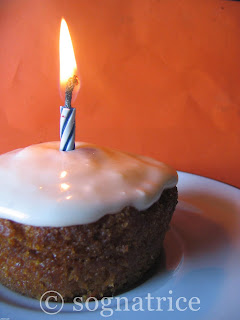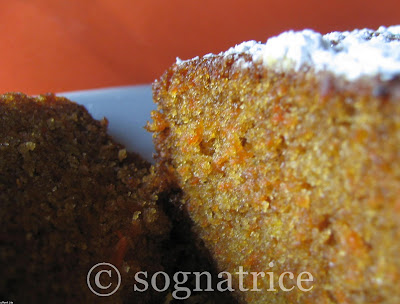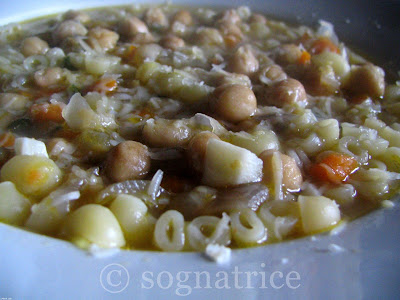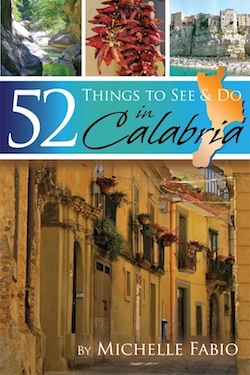Archive for the ‘what’s cooking wednesday’ Category
What’s Cooking Wednesday: Pasta e Ceci
 Today’s What’s Cooking Wednesday recipe is a new one around this house (but already a favorite!); it’s based on a variety of recipes around the Internet, and it’s another easy, delicious soup that will impress–just like we like ’em!
Today’s What’s Cooking Wednesday recipe is a new one around this house (but already a favorite!); it’s based on a variety of recipes around the Internet, and it’s another easy, delicious soup that will impress–just like we like ’em!
And even better, pasta e ceci or pasta and chickpeas (“ceci” is pronounced CHEH-chee by the way) is a great cold weather dish and completely adjustable according to your tastes; you can make it as thick or thin as you like and add whatever spices strike your fancy, from basil to rosemary to thyme.
Below is my basic recipe, but feel free to experiment!
Pasta e Ceci
(Pasta and Chickpeas)
(makes 2 big bowls of soup)
2 tablespoons olive oil
1 onion, finely chopped
1 large clove garlic, finely chopped
1 carrot, finely chopped or shredded
1 peperoncino (or hot pepper flakes)
1 sprig fresh rosemary
3 cups weakly flavored chicken stock or water
1 1/2 cup canned chickpeas, drained and rinsed
1 cup dried soup pasta (something small)
1 tablespoon chopped parsley
Salt to taste
Parmigiano reggiano cheese (optional)
1. Heat olive oil in pot large enough to hold soup and add onion, garlic, carrot, peperoncino, and rosemary. Cook on low heat until translucent, between 10 and 15 minutes (don’t let this burn).
2. Take out rosemary, which I do because we like a subtle rosemary flavor in this. You’re welcome to keep it in.
3. Add chicken stock and chickpeas and simmer for a half hour.
4. Take out about half the chickpeas and crush into a paste (to thicken the soup). You can do this with a blender/food processor, but I just use the back of a big spoon–fewer dishes (which means less water used to wash them!) and less electricity too. Plus, I’m lazy and this saves me from getting out my handheld mixer, which is annoying to clean. Add this mixture to the soup.
5. At this point, test for salt; this will also let you know how much salt you should put in the water with the pasta.
6. About the pasta, I prepare it separately and then combine the two in serving dishes, but most recipes prepare the pasta right inside the soup. I prefer my way so that if there are leftovers, the pasta doesn’t soak up all the broth (I’ve mentioned this before).
7. After combining pasta and soup, stir in parsley.
8. Serve hot with grated parmigiano reggiano cheese.
Buon appetito!
Birthday Carrot Cake Recipe
 Perhaps some of you thought I was off tending puppies yesterday or maybe even early birthday celebrating. Don’t I wish.
Perhaps some of you thought I was off tending puppies yesterday or maybe even early birthday celebrating. Don’t I wish.
What I was really doing was nearly pulling my hair out over the inexplicable continued crap Internet connection I have. Ever since it went out about 10 days ago, it’s been on and off — and yesterday was completely off. Right now it’s touch and go (can’t access many pages), but I’m keeping positive.
And aside from causing me stress regarding work, it’s *completely* thrown off my blogging schedule. Argh.
Guess you’ll have to wait another year for today’s originally planned post. Or I’ll just save it for NaBloPoMo . . . with which I sincerely hope Telecom Italia cooperates.
So here is What’s Cooking Wednesday: the Birthday Edition — a day late for Wednesday, but just in time for my birthday! Woohoo!
For anyone who’s curious, I’m 31 today. So send any e-cards in large font please. Hah!
Now, back to the originally scheduled post:
For my birthday, I always have this chocolate cake. It’s my absolute favorite cake in the whole world — especially when my mom makes it.
But I’ve been feeling a little daring lately, in the mood for something different. And that, for me, means carrot cake.
I love carrot cake, haven’t had it in at least four years, and besides, isn’t it just a great autumn cake, spicy and orange and brown and cream cheese icing and yum?
I have never made a carrot cake before, and I’m not entirely sure why not. Probably because my mom isn’t particularly fond of it, so she never passed on a recipe, and goodness knows I stick to the recipes of experts around these parts.
So I turned to these Internets and went for the first recipe that came up. I know. Really selective right? Well you see, I had been going over what I thought would go into a carrot cake in my head, and this recipe fit that, especially with the adjustments listed in the comments. So I made my own tweaks, and below is what I came up with.
This cake is delicious. It’s a subtle carrot cake, and by that I mean it’s not at all like some store- or restaurant-produced cakes that make me feel like I’m eating a scented candle. I like my spices subtle, so if you like them stronger, you might want to adjust. In fact, I’d go so far as to say that if you think you don’t like carrot cake, you should give this one a go.
Also, the original recipe had pecans. Some people in the comment section switched to walnuts, but I didn’t add any nuts at all; I’m not a fan of nuts in my cakes in general. But this would’ve been *fabulous* with raisins so I’ll make an effort to find them before I make this again.
My Birthday Carrot Cake
 4 eggs
4 eggs
1 c white sugar
1 c brown sugar
1 ¼ c vegetable oil
3 tsp vanilla 2 c flour
2 tsp baking soda
2 tsp baking powder
½ tsp nutmeg
3 tsp cinnamon
½ tsp salt
3 c grated carrots
1. Preheat oven to 350° F (175° C). Grease and flour 9 x 13 inch pan (or, as I did a 6 muffin/cupcake pan and a small loaf pan).
2. Blend together eggs, sugars, oil, and vanilla in a large mixing bowl.
3. In a separate bowl, combine flour, baking soda, baking powder, spices, and salt and add to mixing bowl a little at a time. At this point, the mixture will be really thick, almost pasty. Now you’re ready to stir in the carrots.
4. Pour into pan(s), and put in the oven. The original recipe says 40-50 minutes for a full-sized cake. My muffins took about 20 minutes, and the loaf pan about 40. Just make sure to always test with a toothpick in the center—if it comes out with no batter, you’re good.
For amateur bakers, the other trick is the “spring back to the touch test,” which says, not surprisingly, that the cake should spring back to your touch. I find this one a big dangerous though as you can sink the top of your cakes and muffins/cupcakes pretty easily, so I always use a toothpick.
5. Remove from oven and let cool before icing.
Cream Cheese Icing
The measurements in the original recipe looked really off to me so I used a tried and true cream cheese icing recipe that I’ve made before. You might want to play with this too according to your tastes and how much icing you like (I don’t use much). In fact, on the cake, I just sprinkled some confectioner’s sugar on top. Look it’s snowing in October in southern Italy!
8 oz softened cream cheese
4 tbl butter
1 ½ c powdered sugar
½ tsp vanilla
Beat everything together until smooth and to your desired consistency.
Grating the carrots makes this one a little labor intensive, but it’s worth it, especially if you’re making it for someone special — like for yourself. Come on, show yourself a little love this Love Thursday!
Happy Love Thursday and buon appetito!
Edited to add a request:
If you leave birthday wishes for me,
please leave the date of your birthday too (no year required!)
so I can return the wish.
What’s Cooking Wednesday: Easy, Delicious Minestrone
Lest you think we’re always making everything from scratch around here, I’m going to clue you in on one of our colder weather staples–minestrone.
Whether you say it with or without that final “eh” (never an “ee” sound please), its etymological origin is the Italian word for soup, minestra, with the augmentative suffix “one” denoting larger or grander, and it’s povera cucina (peasant or poor people’s cuisine) at its finest.
Minestrone, basically vegetable soup with pasta, is eaten all throughout Italy and there are an uncountable number of recipes for it–some with meat, some without, some with more tomatoes, etc. The idea is to use whatever vegetables are in season and the stock of your choice.
Let me end the mystery now and tell you that I use a frozen minestrone vegetable mix and bouillon cubes. Sure I (and you) could make this from scratch, but it’s just so darn good this way–and so easy too–that I often just make it like this, and I thought you might enjoy a truly simple recipe as well.
Now let me caution you by saying that I’m not sure frozen vegetable mixes are created equal everywhere. The one that I buy is seasoned–there’s parsley, garlic, and basil listed in the ingredients–so you may need to add more seasoning than what I list here. Feel free to experiment.
Also, I like my minestronea bit more tomato-ey than the recipe here, but since P doesn’t, I’m giving you the way I make it most of the time. If I make this soup just for me (and sometimes I’ll make two small pots, one for each of us), I add some tomato sauce (just crushed tomatoes) after the broth. You could add fresh tomatoes, but around here in the winter, the best flavor would come from sauce.
Minestrone
3 1/2 cups water
2 bouillon cubes (adjust for your taste)
2 tablespoons olive oil
1 medium red onion, chopped finely
2 small cloves garlic, minced
1 bag of frozen vegetables
Small soup pasta
Heat pot of water on high, and when boiling or near boiling, add bouillon cubes to dissolve, making what we’ll now call broth.
Meanwhile, in large soup pot, heat olive oil on medium and then add onion and garlic and let cook until tender, nearly brown. At this point, your broth should be ready, so pour that into the larger pot with the garlic and onions.
Add vegetables (still frozen and in proportion to the water you’re using) and let cook for about 20 minutes to a half hour, testing vegetables to make sure they’re done before serving.
For the pasta, the only rule is to use something small; we use lumachine, pictured above, which are like little elbow macaroni. Boil pasta separately in salted water and then put a small amount of pasta in each serving bowl and add soup. This method ensures that you can then store leftover soup without mushy pasta soaking up the broth.
Serve immediately with some crusty Italian bread. Note that P (and probably many Italians) would never eat bread with this as there’s already pasta in it. Duh. I, on the other hand, always ate soup with bread growing up and continue to do so.
No excuses on not trying this one. It really couldn’t get much easier–or tastier.
Buon appetito!
Recipe: Pasta all Norma
I apologize in advance to those who expressed their dislike of eggplant/aubergine when I stuffed them a few weeks ago…because we’re going at the melanzane again today.
For this week’s What’s Cooking Wednesday, we’re pairing them with tomatoes, basil, garlic, onions, and pecorino cheese in Pasta alla Norma, a Sicilian dish whose origins are in dispute (read more here) but always involve Catania‘s own Vincenzo Bellini and one of his most famous operas, “Norma.”
I should probably add an “alla Sognatrice” at the end of the name of this dish because this is my take on the traditional recipe, which includes a kind of cheese called ricotta salata. It’s not all that easy to find, so I substituted pecorino, as did blogging buddy Sara over at Ms Adventures in Italy recently.
Other differences: some recipes call for sliced eggplant, but I prefer it diced, and almost all require you to crumble the ricotta salata cheese–I could’ve done that with the pecorino, I suppose, but I prefer it grated.
You’re free to do as you like of course.
Pasta alla Norma
4 small eggplants, cut into 1/2 inch cubes
Salt
3 tablespoons olive oil
1 small onion, chopped
3 cloves garlic, minced
Peperoncino to taste
1 can of diced tomatoes
8-10 basil leaves, torn
Spaghetti or penne pasta
Wash and dice eggplant. Place in colander and salt well, being sure to coat all sides (use coarse salt if you have it). Let sit for about a half hour and then remove eggplant from colander and pat dry.Heat olive oil in skillet over medium heat. Add eggplant and cook until brown on all sides, about 10 minutes.
Add onion, garlic and peperoncino, and then after a few minutes, add tomatoes. Let simmer for about 15 minutes or until the tomatoes are done to your taste.
In the meantime, prepare pasta in large pot of boiling water.
When sauce is just about finished, add basil, and then combine pasta and sauce–enough to coat the pasta.
Serve immediately with cheese on top.
Buon appetito!
what’s cooking wednesday: pasta all’amatriciana
Just in time for our cooler, rainier autumn days, today’s What’s Cooking Wednesday is simple, stick to your ribs goodness–Pasta all’Amatriciana, so named because it hails from a town called Amatrice, outside of Rome.
What follows is our interpretation of this recipe in my house. We use penne instead of the traditional bucatini, but we do use pancetta arrotolata like most recipes for this call for. Oh and we add just a touch of garlic.
What’s pancetta arrotolata you say? Well, it’s just rolled pancetta, and it looks like this:
You can read more about it here, but now I’m going to tell that we, lovers of all things spicy, don’t actually add any of our wonderful peperoncino to this dish–we just buy the spicy pancetta instead. See that reddish orange tint inside the rolls? That’s hot, and by that I mean piccante and not Paris Hilton-y.
As a substitute meat, you can use anything similar–we also prepare this recipe with Calabria’s most famous salami, soppressata, or even capicollo (and then add peperoncino). Just keep it chunky and spicy, and yum.
We’re lucky here in Calabria since its tradition of curing meats dates back to the days when Greeks first colonized this area–we’re talking B.C. So yes, they know what they’re doing, and the results are always fabulous.
For those of you lucky enough to be near an Italian market, do make the effort to seek out some of these meats. They’re great in antipasti and also as ingredients in a wide variety of dishes.
Like many Calabrian-Americans, we always had soppressata in our basement in America–my grandfather (non-Italian!), father, and brother would make them and we’d dig in for a Christmas-time treat. Sliced reeeeally thin with some fresh bread is my favorite. Anyone else?
Interestingly but not surprisingly, the local butcher who provides the spice mix to make the “soupies” as we called them (among Calabrians, “soppressata” becomes “suppressata,” and Americans love to make little nicknames, right?) has origins in Isca, which I wrote about yesterday.
So you see, I was also lucky in America.
Pasta all’Amatriciana
2 tablespoons olive oil
1 small onion, diced
1 garlic clove, diced
100 grams pancetta arrotolata,
unrolled and cut into bite-sized chunks
1 tablespoon freshly chopped parsley
1 can peeled tomatoes
500 grams penne pasta
water and salt to boil pasta
grated pecorino romano cheese to garnish
First put on the water to boil for the pasta, and then chop all your ingredients as described above.Put olive oil in skillet and heat on medium. Add pancetta, and let cook for about five minutes, until the pancetta renders its fat. I know, yum, right?
Then add the onions and cook until translucent. Add garlic and parsley and let cook for another minute or so.
At this point, your water should be boiling, and you can add salt and the pasta to the water (or do this whenever your water *is* boiling after this point).
Now add the tomatoes to the skillet. You can run them through a grinder or roughly chop them first depending on how you like them. You can also add some of the pasta water to thin out the sauce a bit; I usually use about 1/4 cup.Let the sauce simmer for about 1o minutes or until the tomatoes taste done to you. You can add salt, but do so sparingly because the pancetta is salty and you’ve also added salted pasta water.
When the pasta is just short of al dente, remove, strain, and combine well with the completely cooked sauce, still over medium heat.
Once the pasta has absorbed some of the sauce and become fully al dente, remove and serve immediately. Garnish with grated pecorino romano cheese.
A note:
Don’t worry if your timing isn’t exact the first time you make this–it’ll get easier the more you make it, which is only more incentive to keep pancetta in your fridge.
Buon appetito!
—————
[tags]pasta, pasta all’amatriciana, pancetta, pancetta arrotolata, cooking, recipes, what’s cooking wednesday[/tags]















